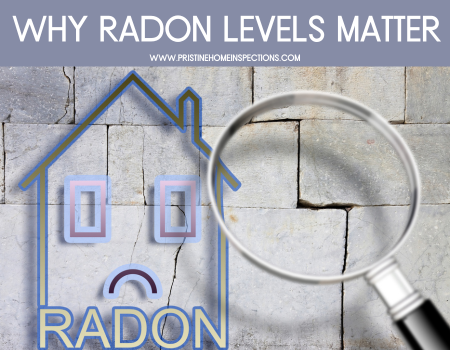Radon levels are of the upmost importance, even though you may not have heard of it. Radon, a colorless, odorless, and tasteless radioactive gas, is a naturally occurring element found in soil, rocks, and groundwater. While radon is ubiquitous in the environment, elevated levels of this gas can pose serious health risks to humans when it accumulates indoors. Understanding the importance of monitoring and mitigating radon levels is crucial for safeguarding the health and well-being of individuals and families.
- Health Risks Associated with Radon Exposure: Radon is the second leading cause of lung cancer after smoking and is responsible for thousands of lung cancer deaths each year. When radon gas is inhaled, it undergoes radioactive decay in the lungs, releasing alpha particles that can damage lung tissue and increase the risk of lung cancer over time. Prolonged exposure to elevated radon levels can significantly elevate the risk of developing lung cancer, particularly in non-smokers.
- Invisible and Odorless Nature of Radon: One of the most concerning aspects of radon is its invisibility and lack of odor or taste, making it virtually undetectable without specialized testing equipment. Unlike other indoor air pollutants that may produce noticeable odors or symptoms, radon gas can accumulate silently in homes, exposing occupants to harmful levels without their knowledge.
- Prevalence of Radon in Homes: Radon can enter homes through cracks in the foundation, gaps in construction joints, floor drains, and other openings in the building’s structure. Once inside, radon can become trapped and accumulate to dangerous levels, particularly in poorly ventilated or tightly sealed spaces such as basements and crawl spaces. High radon levels have been found in homes across the United States and around the world, regardless of geographic location or soil composition.
- Importance of Radon Testing: Testing for radon is the only way to determine if elevated levels are present in a home. Radon testing kits are readily available and easy to use, allowing homeowners to assess radon levels in their living environment. Short-term and long-term testing options are available, with long-term tests providing a more accurate representation of radon levels over an extended period.
- Mitigation Measures to Reduce Radon Levels: If elevated radon levels are detected in a home, mitigation measures can be implemented to reduce exposure and minimize health risks. Radon mitigation systems typically involve the installation of vent pipes and fans to redirect radon gas from beneath the home to the outdoors, where it can safely dissipate. These systems are highly effective in reducing radon levels and can be customized to suit the specific needs of each home.
- Protecting Future Homeowners: Addressing radon levels is not only essential for the current occupants of a home but also for future homeowners. Radon testing and mitigation measures can help ensure that homes are safe and healthy environments for occupants now and in the future. When buying or selling a home, radon testing is often included as part of the inspection process, providing valuable information to both buyers and sellers.
- Government and Health Organization Recommendations: Recognizing the significant health risks associated with radon exposure, government agencies and health organizations, including the Environmental Protection Agency (EPA) and the World Health Organization (WHO), have issued guidelines and recommendations for radon testing and mitigation. These organizations stress the importance of radon awareness and encourage homeowners to take proactive steps to protect themselves and their families.
Radon is a pervasive and potentially harmful indoor air pollutant that can pose serious health risks when present at elevated levels. Understanding the significance of radon levels and taking proactive measures to test for and mitigate radon gas in homes are essential steps in safeguarding the health and well-being of occupants. By raising awareness about the importance of radon testing and mitigation, we can work towards creating safer and healthier indoor environments for everyone.

